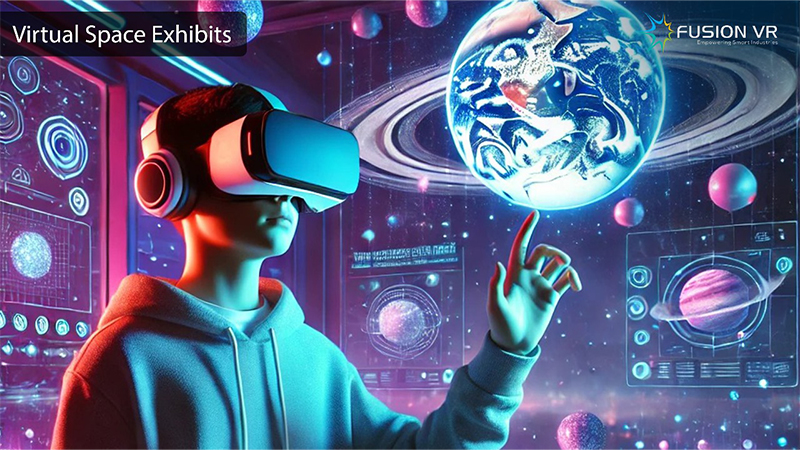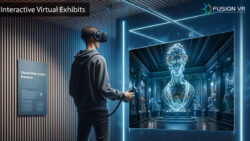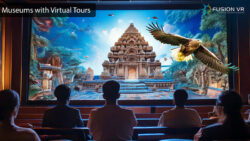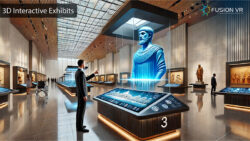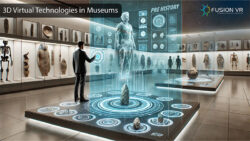The cosmos has always been a source of fascination for humankind, intriguing innumerable explorers, scientists, and dreamers to come to grips with its mysteries. Beginning with ancient astronomers tracking celestial bodies and culminating with modern-day scientists launching interstellar probes, the search for understanding the universe has always gone on. Nowadays, digital space museums are bringing a revolution in engaging people in space exploration and astronomy. These avant-garde institutions bring technology and science together to provide an immersive experience that pulls the wonders of the universe closer to home.
Where civilization is flourishing by the means of digital advancement, traditional museums will metamorphose into something else. Digital space museums use augmented reality (AR), virtual reality (VR), artificial intelligence (AI), and interactive simulations to get that enriching unique experience. Visitors no longer depend solely on physical exhibitions; instead, they can now travel virtually to experience events in space, interact with some celestial phenomena, and behold the vastness of the universe in ways previously unmanageable. Digitalizing the museum experiences ensures enthusiasts around the world will now have access to these wonders, and they can comfortably explore the wonders of the universe from home or participate in it through dedicated experience centers.
One of the unique charms of digital space museums is their ability to take visitors beyond the Earth’s atmosphere. In high-resolution VR simulations, a person can walk around on the surface of Mars, cruise through the rings of Saturn, or even witness the birth of a star. Such interactive experiences serve to provide a contextual framework for understanding space science while exciting young minds to become the next generation of astronomers and engineers. The detailed visuals allow users to appreciate the vastness and complexity of the universe. Moreover, digital museums display information about planetary discoveries, asteroid paths, and cosmic events using real-time data updated from space telescopes and satellites.
Digital space museums gain another dimension through augmented reality, letting virtual elements mingle with real-world environments. In AR applications, users can view and manipulate holographic models of the solar system, change planetary orbits, and explore spacecraft in 3D. Using mobile AR features, educational institutions and museums can expand their reach beyond just physical spaces, allowing students and space enthusiasts to interact with astronomy lessons in classrooms, libraries, or even outdoors. AR-enhanced space education augments learning experiences to bring complex astrophysical concepts closer to life and easier to understand.
AI is instrumental in transforming digital museum experiences into captivating ones. The real power lies in AI-powered chatbots and virtual guides that customize the tour experience, answer visitor queries, and curate content based on personal interests. Machine learning algorithms sift through the user’s interactions and generate recommendations to fine-tune the experience even further. Simulations that are powered by AI can very accurately recreate space missions from the past, allowing the user to relive moments such as the Apollo moon landings, the Voyager probes’ travels, or the Mars rovers’ excursions. The immersive AI reconstructions provide a window into the trials and victories of the trade of space exploration.
The more interactive storytelling unfolds in the digital museums for space science, the more enhanced is the engagement. The exhibits become an operatic stage where the audience becomes an active participant in cosmic tales instead of a passive spectator. Be it an architect of a majestic lunar landing as a mission commander or a scientist peering into the atmosphere of exoplanets, these narratives present deeply enriching learning experiences. In such settings, interactive exhibitions stimulate opportunities for challenge-solving, keeping active in their budding appreciation for the scientific principles tied to the creation of space discovery. Embedding gamification through quizzes, challenges, and virtual missions lays charm and motivation for further exploration.
The impact of space museums in the digital realm encompasses more than just nurturing singular experiences; they also engender a larger platform for collaborative research and international space education activities. These labs are engaging their user communities online, facilitating conversations, knowledge-sharing, and participation in citizen science projects. Enthusiasts can join in making observations of the cosmos, helping to classify celestial objects, and assisting astronomers in spotting exciting new cosmic phenomena in real time. This collaborative approach broadens individual participation in the scientific enterprise and refines a collective comprehension of the universe.
Digital space museums also deal with problems faced by more traditional institutions, such as geographical constraints and resource restrictions. While physical space museums need a large degree of infrastructural support, digital space museums are less encumbered by logistical difficulties. Virtual exhibits avert the need for expensive conservation of physical infrastructure, with uninterrupted updates in their content; this ensures museums remain ever-vibrant and in tune with the most recent findings in space. Furthermore, digital platforms support multiple languages to attract more diverse audiences and advance the inclusiveness of space education.
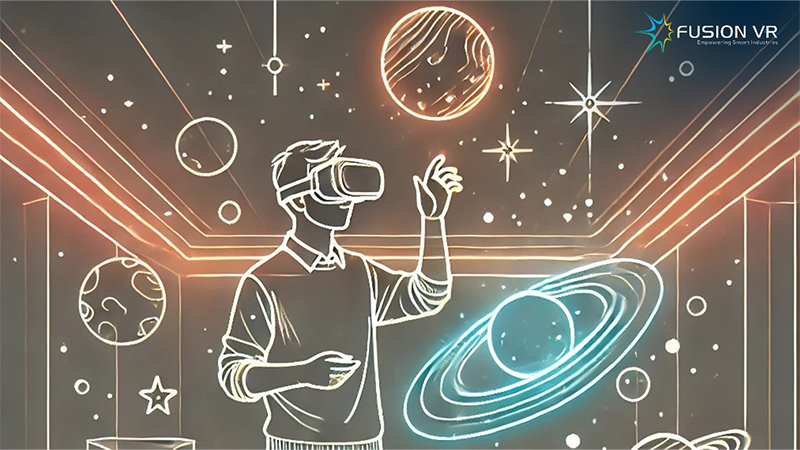
Space museums are more than VR simulations and AR applications; they also screen live events, lectures by experts, and live telescope feeds. Virtual observatories allow users to observe celestial events of interest-for example, eclipse, meteor shower, and planetary transit-without the need for special equipment. These astronomers and educators present live Q&A sessions, where they discuss current space missions and discoveries. This real-time interaction instills a sense of community among space lovers and profoundly influences the fostering of a global network of learners who share a passion for astronomy.
And since technology is ever-evolving, the future of digital space museums is ever-bright. Enhanced haptic feedback could take the virtual experience to another level. Who would not like to feel the texture of planetary surfaces or experience differences in gravitational pull? Quantum computing and AI-generated simulations may also provide more accurate formalisms on how to visualize cosmic phenomena, building further limitations on how we visualize space. With developments in space tourism and commercial spaceflight, digital space museums could partner with private aerospace companies to provide astronaut training with some hands-on training. It has tremendous potential, emphasizing the very great power of digital museums to redefine how humanity engages and understands space.
VR and AR developers play a vital role in transforming digital museums into rich, interactive experiences. They bring together technical expertise in 3D modeling, spatial design, and immersive storytelling in ways that create virtual environments that are both engaging and educational. The quality of high-resolution visuals as well as real-time, intuitive interfaces allows audiences to explore virtual spaces and interact with digital exhibits seamlessly. As turnkey solution providers, they would take care of everything from conceptual development to final implementation, thus ensuring that the museum delivers a rich, immersive experience tailored to its audience.
Digital space museums finally bridge the gap between curiosity and knowledge, making the vast realms of the cosmos more approachable than it has ever been. With the integration of cutting-edge technologies, interactive narratives, and real-time scientific information, they inspire an emerging era of would-be space explorers. Be it through immersive VR expeditions, AR-assisted learning, digital space museums keep pushing the conventional boundaries of how we engage with the universe. Digital experiences will surely serve to pave the way on our cosmic journey as we set about the next great adventure into space.

